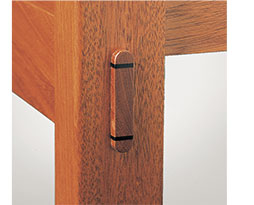Some months ago, I started to make a simple waterfall table from some brown oak. It was a leftover board from another project.
The issue is that I didn't change a setting on the domino, and on the leg side produced through domino holes.
Any ideas how I can make this into a design feature? Bowties are one possibility, false through tennons are another in a contrasting timber maybe.
Help!
The issue is that I didn't change a setting on the domino, and on the leg side produced through domino holes.
Any ideas how I can make this into a design feature? Bowties are one possibility, false through tennons are another in a contrasting timber maybe.
Help!




































